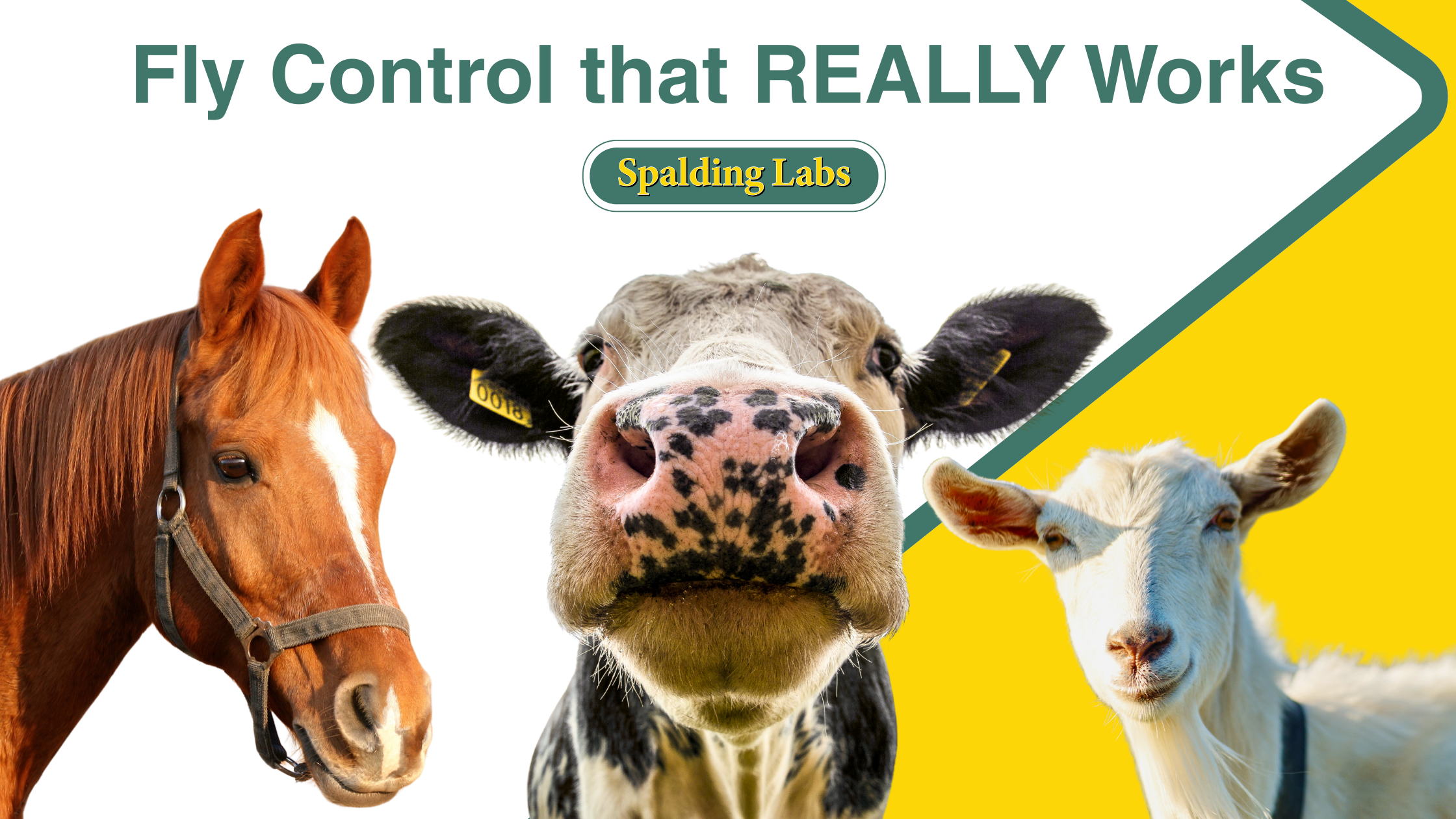The Power of Parasitoid Wasps in Fly Control

Research Confirms Power of Parasitoid Wasps in Filth Fly Control: Proven Species and Implementation
Flies aren’t just a nuisance—they’re a serious threat to animal health, comfort, and productivity. Fortunately, scientific research continues to back the power of biological fly control using parasitoid wasps emerge. These tiny, non-stinging and non-biting insects specifically target fly pupae, preventing adult flies from ever emerging by disrupting the fly breeding cycle at its most vulnerable stage. They’re tough on flies, but don’t bother people or animals. Decades of ongoing research continue to emphasize the effectiveness of specific parasitoid species for filth fly control, particularly those in the genera Spalangia and Muscidifurax. These beneficial insects parasitize the pupae of house flies (Musca domestica) and stable flies (Stomoxys calcitrans) by breeding in fly pupae and killing filth flies before they emerge.
Here’s how parasitoids work: Filth flies lay their eggs in areas with high organic matter such as manure, bedding, or spilled feed. After hatching into maggots, the larvae develop into pupae—the final stage before becoming adult flies. This is where parasitoid wasps go to work. These beneficial insects actively search through the environment to locate fly pupae, feeding on some and laying their eggs inside of others. As the young wasps develop, they consume the fly from within, preventing adult emergence and breaking the fly life cycle.
Filth flies contribute to reduced milk yields, weight gain losses in cattle, and poor performance in horses. Fortunately, nature provides a highly targeted defense.
Why Fly Control Is More Critical Than Ever
Recent research has provided an updated and sobering look at the economic toll of filth flies on animal production in the US, especially as resistance to insecticides continues to increase (Machtinger 2021). Another comprehensive study analyzing data across four key sectors of the U.S. cattle industry—dairy, cow-calf, stockers, and feeders—found that stable flies (Stomoxys calcitrans) cost the industry over $2.2 billion annually in lost productivity (Taylor, 2012).
Their impact includes:
A 139 kg (306 lbs) annual milk loss per dairy cow
6–26 kg (13-57 lbs) in weight loss per head across calves, stockers, and feedlot cattle
As much as 890 kg (1,962 lbs) in milk loss and 680 kg (1,499 lbs) in lost beef weight annually from stable flies breeding in a single winter hay feeding site
These numbers do not account for reduced feed conversion efficiency, decreased breeding success, or environmental degradation—further reinforcing the need for year- round, proactive fly control.
Parasitoid Wasps: Proven Species, Better Results
When it comes to biological fly control, not all parasitoid wasps are created equal. Spalding Labs sets itself apart by using only Spalangia and Muscidifurax species in its Fly Predators® blend —the two most effective parasitoids for controlling filth flies in livestock and equine environments. Unlike other providers whose parasitoid mixes are often composed of up to 90% Nasonia vitripennis—a species shown to be less effective in real-world conditions—Spalding selects species that excel in the environments where filth flies actually breed: manure piles, bedding, and spilled feed. Spalangia and Muscidifurax, the species included in Spalding’s Fly Predator blend, have evolved to search through various depths of organic matter, giving them a critical advantage in finding and parasitizing hidden fly pupae.
Peer-reviewed research strongly supports this approach. A 2018 study in Pests and Vector-Borne Diseases in the Livestock Industry found that Muscidifurax zaraptor and Spalangia cameroni outperformed Nasonia vitripennis with significantly higher parasitism rates and longer-lasting control—even in complex, high-organic-matter conditions. Additional studies have shown that combining both surface-active and burrowing parasitoids significantly increases overall suppression by reaching pupae at multiple substrate levels.
For livestock and horse owners, this means more effective, targeted fly control without relying on chemicals—and a healthier, more comfortable environment for animals and their caretakers.
Flexible, Performance-Oriented Programs
Spalding Labs recognizes that no two operations are alike—and neither are their fly control needs. Factors like climate, geography, and levels of organic matter can all influence fly pressure. That’s why Spalding offers a range of flexible delivery options designed to fit the specific challenges of your environment. Whether you need shipments every four weeks, every three, or on a custom schedule, Spalding ensures a consistent supply of Fly Predators arrives exactly when your operation needs it most.
Every shipment of Fly Predators is backed by a live delivery guarantee and contains a carefully selected mix of Spalangia and Muscidifurax species—chosen for their proven ability to thrive and perform under diverse, real-world conditions. Some target fly pupae near the surface, while others burrow deep into organic matter, maximizing coverage where flies are breeding.
When conditions shift—whether due to weather, seasonal changes, or sudden spikes in fly pressure—Spalding makes it easy to add extra shipments as needed. It’s proactive, adaptive fly control that works with your operation, not against it.
Improved Animal Health and Production Outcomes
Filth flies aren’t just a nuisance—they’re a direct threat to animal health, productivity, and your bottom line. Stable flies alone are responsible for feed efficiency losses of up to $35 per head in beef cattle annually, while house flies are known carriers of over 60 pathogens and can contribute to mastitis in dairy herds. Horses also suffer from fly- related impacts like stress, skin issues, and behavioral changes that compromise comfort and performance.
Effective fly control has a measurable impact:
Improved milk yield and animal comfort in dairy herds
Enhanced weight gain and feed efficiency in beef cattle
Better skin condition, behavior, and performance in horses
Reduced reliance on chemical pesticides and no risk of insecticide resistance
By using Spalding Labs’ Fly Predators, livestock and equestrian programs can reduce fly pressure while avoiding chemical resistance, protecting beneficial insects, and meeting specialized program requirements. An effective parasitoid program is an essential part of any Integrated Pest Management (IPM) program for organic and conventional operations alike.
Biological Fly Control: A Smarter, Sustainable Strategy
Effective fly control is essential for maintaining animal health, protecting productivity, and sustaining your operation’s long-term success. As research continues to confirm, biological control using targeted parasitoid wasps is one of the most reliable, sustainable tools available for managing filth fly populations in livestock and equine environments.
Spalding Labs Fly Predators® delivers what science supports: the right parasitoid species, delivered at the right time to meet the specific needs of your operation. Backed by decades of field experience and peer-reviewed research, our flexible, customized approach helps reduce fly pressure while supporting your goals—whether that’s higher milk production, better weight gain, or healthier, more comfortable horses and livestock.
Fly season doesn’t wait—start protecting your animals and your bottom line with a proven, natural solution.
Click here for more information: https://www.spalding-labs.com/
Click here for more information: https://americandairymen.com/



